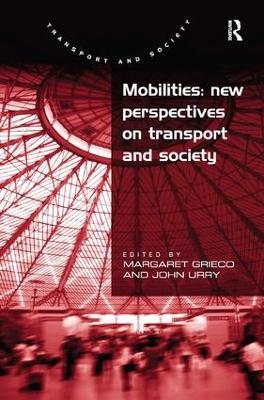Transport and Society
2 total works
Mobilities: New Perspectives on Transport and Society
by Professor John Urry
Published 28 December 2011
Bringing together the leading authors currently working at the intersection of social science and transport science, this volume provides a companion to the well-established and extensive international Transport and Society series. Each chapter, and the volume as a whole, offers closer and richer consideration of the issues, practices and structures of multiple mobilities which shape the current world but which have typically been overlooked or minimised. What this approach seeks to do is not only draw attention to many new areas of research and investigation relating to mobile lives, but also to point to new theories and methods by which such lives have to be researched and examined. Such new theories and methods are relevant both to rethinking 'transport' studies as such but are also recasting 'societal' studies as 'transport' so that it comes out of the ghetto and enters mainstream social science.
Mobilities, Networks, Geographies
by Jonas Larsen, Professor John Urry, and Kay Axhausen
Published 28 September 2006
There have been striking increases in both long-distance travel and in communications through mobile phones, text messaging, emailing and videoconferencing. Such developments in communication, along with a similar increase in physical travel and movement of goods around the globe, reconfigure social networks by disconnecting and reconnecting people in new ways. This original book puts forward one of the first social science studies of the geographies of social networks and related mobilities of travel, communications and face-to-face meetings. The book examines five interdependent mobilities that form and reform these geographies of networks and travel in the contemporary world. These are: physical travel of people for work, leisure, pleasure, migration and escape; physical movement of objects delivered to producers, consumers and retailers; imaginative travel elsewhere through images and memories seen on texts, TV, computer screens and film; virtual travel on the internet; and communicative travel through letters, cards, telegrams, telephones, faxes, text messages and videoconferences. In the book the authors examine the interconnections between these different mobilities. They research how travel and social meetings require systems of coordination using virtual and communicative travel in-between physical travel and meetings. They argue that, while it might be imagined that there would be less need of physical meetings with improved technology, on the contrary, scheduled visits and meetings have become highly significant. The research shows that they are necessary to social life in the contemporary world, both within business and, especially, within families and friendships which are increasingly conducted at a distance.

